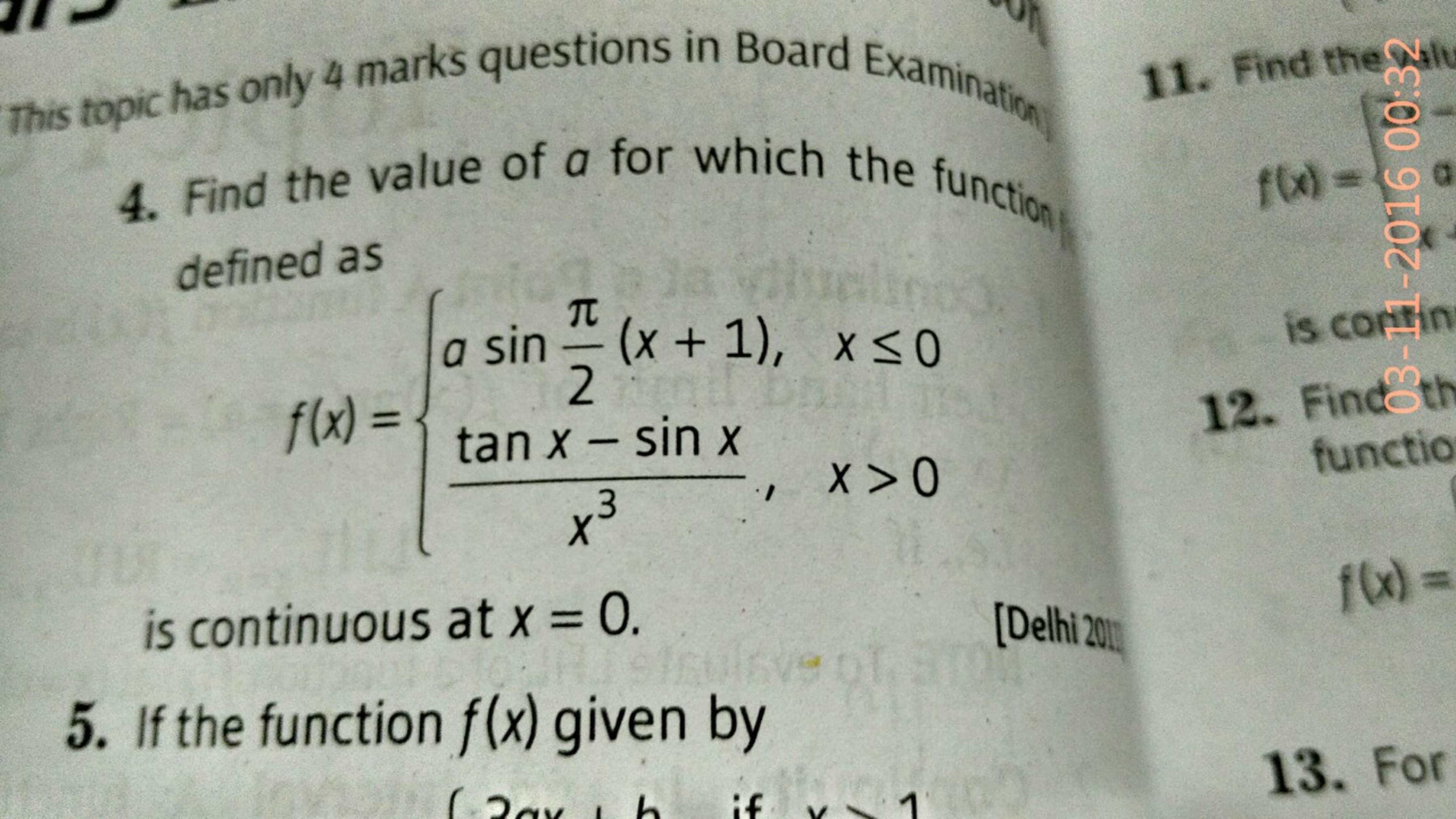The Limiting limit

Answer the question number 4. Try not to use L'Hôpital's Rule P.S. I have written a doubt in solution section please help me with it if you can.
Moderator's edit :
Find the value of for wihch the functiion is defined as
and is continuous at .
This section requires Javascript.
You are seeing this because something didn't load right. We suggest you, (a) try
refreshing the page, (b) enabling javascript if it is disabled on your browser and,
finally, (c)
loading the
non-javascript version of this page
. We're sorry about the hassle.
By splitting u mean to distribute tanx and sinx over the denominator x 3 separately as two fractions?